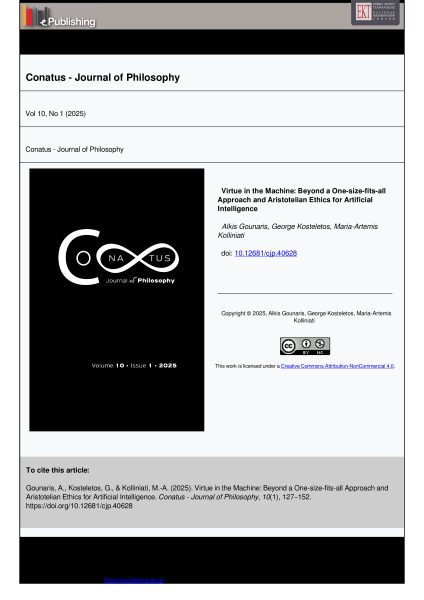Virtue in the machine: beyond a one-size-fits-all approach and Aristotelian ethics for Artificial Intelligence
Alkis Gounaris, George Kosteletos, Maria-Artemis Kolliniati
Abstract: This paper explores the application of Aristotelian virtue, as a quality of excellence and as a key notion of ethics, to AI systems as classified in the EU Artificial Intelligence Act. It argues that while the Act’s approach is based on ‘ethical data’ and ‘prima facie values’, such principles may not be suitable for all AI systems, particularly those in ‘limited’ or ‘minimal risk’ zones. The paper suggests that the Aristotelian concept of virtue can be effectively applied to designing, training, operating and using no-risk or low-risk AI systems. However, its application to the design and training of high-risk areas such as migration, asylum, border control, and justice, where clearly defined objectives are essential, requires ongoing consideration. The paper concludes that by distinguishing between a) design, development, training, deployment, operation and use, b) by stage evaluation of systems, and c) virtuous use of the systems, Aristotelian ethics can serve as an ex post evaluation method for all-risk AI systems, while further research and the potential use of regulatory sandboxes are needed to explore the integration of Aristotelian virtues into the design, development and training of such applications. Finally, we propose a virtue-based ‘AI Seal of Excellence’ certification process, which empowers the virtuous use of AI systems.
Keywords: AI ethics, AI virtues, virtuous agents, EU AI Act, arête, Aristotelian ethics for AI, seal of excellence for AI, virtuous use of AI, liberalism, borders and AI
DOI: https://doi.org/10.12681/cjp.40628
Published: Jun 30, 2025 in https://ejournals.epublishing.ekt.gr/index.php/Conatus/article/view/40628
Gounaris, A., Kosteletos, G., & Kolliniati, M.-A. (2025). Virtue in the Machine: Beyond a One-size-fits-all Approach and Aristotelian Ethics for Artificial Intelligence. Conatus - Journal of Philosophy, 10(1), 127–152. https://doi.org/10.12681/cjp.40628



